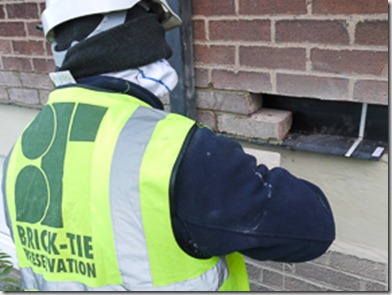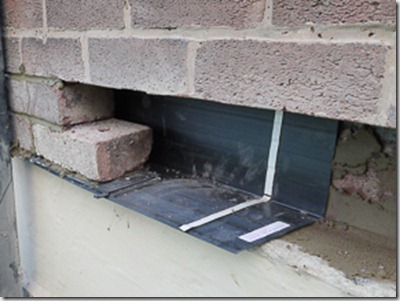Rainwater pouring into a 1970’s apartment in Leeds….
I thought I’d just post a quick one about the use of these handy modular trays.
I specified them on a site in Leeds, where tenants of a block of apartments had real problems with rainwater penetrating over window and door heads. The problem was inherent in the design, which included reinforced concrete beams with brick and block infill. The beams bridged the cavities so any water penetration through the external cladding inevitably collected at the beams; saturating the concrete and in some cases dripping through into the apartments.
Ad-hoc weep holes were drilled and water repellents had been tried before, with limited success.
I specified the Z-LED refurbishment trays and we installed them just a few weeks ago. The feedback from the customers is fantastic as they have put up with water streaming into the apartment every time they get westerly rainfall – not any more though.
Despite the terrible weather since the work was done – the problem is solved.
The units come in 550mm lengths which are sequentially installed and have self-sealing butyl strips which guarantee a leak free joint. Each unit has an in-built drip feature so they are never further than 500mm apart – great.
I use Safeguard’s Storm Dry water repellent cream on many sites with great success, particularly for porous stone and brickwork, but in cases of severe ingress and tricky construction details, a traditional invasive approach is justified and effective.
Dry Rot.


i have 20 years experience within construction as a bricklayer, i have also tackled some of these issues over the years. this guy really knows what he is talking about and is who i turn to when unsure of a diagnosis.